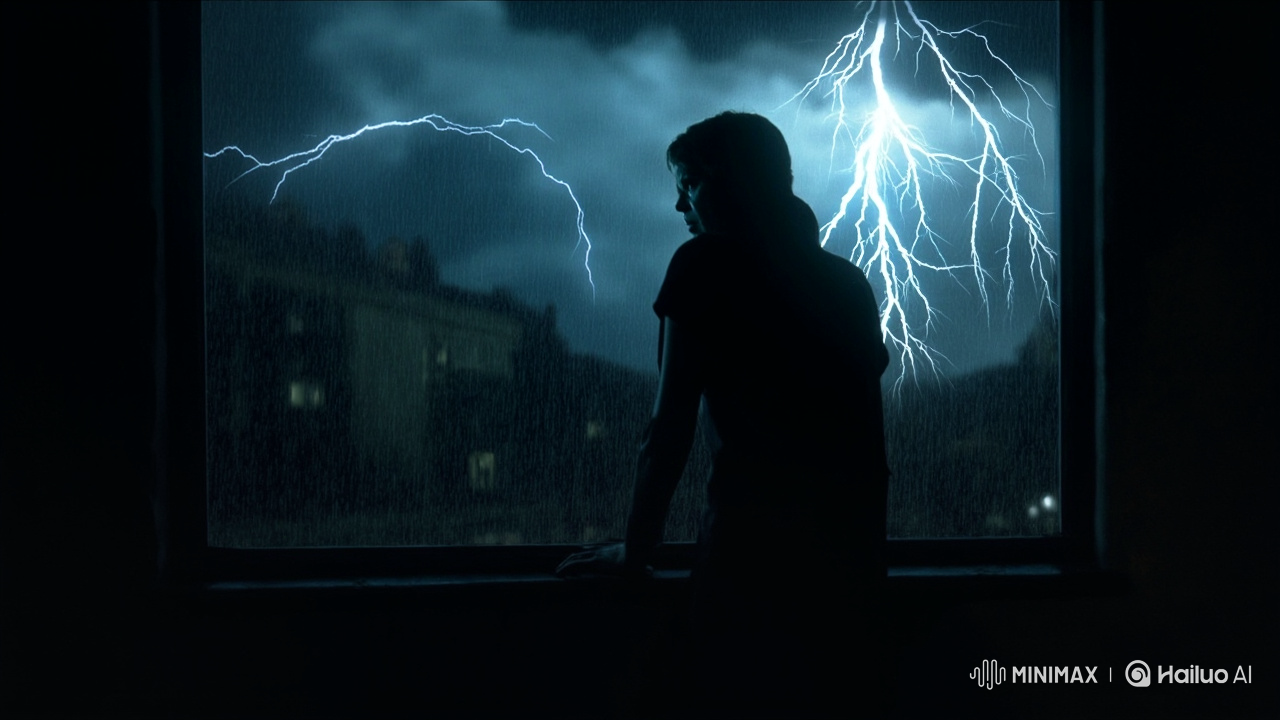Silent Witness on Inspirednap.com unveils a powerful collection of Labubu stories that explore the hidden emotions behind silence, observation, and truth. Each story unfolds like a whisper revealing how the quietest hearts often carry the loudest pain. Through haunting scenes of mystery, conscience, and human connection, this anthology invites readers to reflect on their own unseen battles. If you love emotional and thought-provoking storytelling, explore more from our collections such as Family & Sibling Stories, Magical Stories for Kids, and Bedtime Stories for Adults.
For readers interested in real-life advocacy and awareness, visit The Silent Witness National Initiative to learn how silence can be turned into change.
Silent Witness The Labubu Chronicles of Unspoken Truths
✍️ Writer’s Introduction
There are voices that never reach the air stories buried beneath guilt, fear, or love. As a storyteller, I’ve always been drawn to the invisible space between truth and silence, where the heart becomes both the prisoner and the witness.
In this special edition of Silent Witness, I’ve written five new Labubu stories, each exploring how one moment of silence can change everything.
Labubu our mysterious forest spirit returns not as a mischievous creature this time, but as a quiet observer of human secrets. Through his eyes, we glimpse how truth trembles in the dark, waiting for courage to set it free.
Story 1: Labubu and the Girl Behind the Curtain
A Whisper in the Abandoned House
In the misty town of Glimmerdale, an abandoned mansion stood untouched for years—until a shy girl named Elara began sketching there. Labubu, hidden among the cobwebs, watched her draw faces on old newspapers faces that looked eerily familiar.
The Hidden Witness
One night, Elara heard muffled cries from the basement. She wanted to tell someone, but fear froze her tongue. Through the dusty window, Labubu saw her trembling hand holding a lantern and the shadow of a man dragging a suitcase behind him.
The Choice of Silence
Elara kept the secret for days, until her drawings began to bleed with red ink. Labubu whispered in the night breeze, urging her to speak.
When she finally did, the police found the truth an underground passage where missing children’s belongings were kept. Her silence had almost buried their stories forever.
Moral Reflection
Labubu didn’t speak, but his glowing eyes told her the truth: “Silence can be as heavy as guilt.”
Story 2: Labubu and the Whispering Mirror
The Antique Shop of Secrets
In an old market corner, a mirror hung beneath a flickering bulb. The owner, Mr. Pell, never sold it—because every reflection whispered secrets no one dared to hear.
When Labubu visited the shop, he noticed a woman gazing into the glass, her reflection crying while her real eyes stayed dry.
The Truth Beneath the Reflection
The mirror spoke only to those who had witnessed lies. The woman, Liora, had seen her company’s fraud unfold and kept silent, fearing she’d lose everything. Each time she looked into the mirror, it whispered, “You saw. You knew.”
Labubu’s Intervention
That night, Labubu crept into her dream and showed her a garden filled with mirrors each one cracking when a truth was spoken aloud. The next morning, Liora resigned and reported the corruption, freeing herself from the mirror’s curse.
Lesson Learned
Sometimes, the reflection you avoid is the truth you must face.
Story 3: Labubu and the Stars That Never Spoke
The Astronomer’s Secret
Dr. Finn Arlow spent decades studying the night sky from his observatory. One evening, he noticed a new constellation shaped like an eye. Every night, it blinked once, as if aware of being watched.
Labubu’s Arrival
Labubu, who loved to chase starlight, appeared beside him. He could hear the stars murmuring, “We’ve seen what he hides.” The astronomer’s logbooks were full of fabricated discoveries lies told to win recognition.
The Weight of a Silent Crime
Dr. Arlow knew he was deceiving the world, but his pride held him silent. Labubu placed a single glowing seed on his desk it sprouted into a vine that wrapped around his telescope, cracking it open. The night sky dimmed.
Truth Restored
He confessed his fraud to the science council, losing fame but gaining peace. When he looked up again, the constellation had vanished except for one star, blinking kindly. Labubu had returned it to the heavens.
Moral Message
Silence protects lies, but truth restores light.
Story 4: Labubu and the Painter Without a Face
The Artist’s Shadow
In the coastal town of Meris, a painter named Rhea was famous for her portraits but never painted faces. Every canvas stopped at the neck. Visitors thought it was her “signature style.” Only Labubu knew why.
What She Saw That Night
Years ago, Rhea had witnessed a nobleman’s crime an act of cruelty hidden beneath velvet curtains. He paid her to stay silent, and her fear turned into obsession. She could paint everything except truth.
Labubu’s Silent Visit
One twilight, Labubu appeared through the salt mist and placed a seashell on her windowsill. When she held it close, it whispered the laughter of the children she once drew before silence broke her art.
The Awakening
Rhea painted again, this time with full faces wrinkled, tear-streaked, real. The nobleman saw his guilt on her gallery wall and fled the city in shame. Her silence had ended with a stroke of color.
Meaning
Labubu watched from afar, knowing that art speaks when courage finally breathes.
Story 5: Labubu and the Man Who Buried Voices
The Town of Hollow Bells
In Hollow Bells, the villagers avoided a well at the center of the square. They said if you listened closely, you could hear voices crying beneath it. One day, a man named Darrin sealed it with stones. “Now they’ll never be heard again,” he said.
Labubu’s Curiosity
When Labubu arrived, he felt the silence pressing on his fur like fog. At night, he saw faint lights rising from the well voices begging to be remembered. They were stories, long forgotten.
The Revelation
Darrin had been the town scribe. To protect his family, he buried records of corruption, erasing the names of victims. His silence became his punishment he heard whispers wherever he walked.
The Night of Release
Labubu removed one stone, and the air shimmered with countless glowing words. Each whispered name floated skyward, freeing the forgotten souls. Darrin wept, finally speaking every name aloud.
Final Thought
“Some silences,” Labubu whispered, “can only be broken by forgiveness.”
Writer’s Reflection
These stories of Labubu remind us that silence isn’t always golden it can be heavy, haunting, or healing. Whether it’s a girl behind the curtain or a man burying truth, silence shapes destinies.
Labubu stands as both witness and conscience a quiet reminder that sometimes the bravest thing we can do is speak.
Silent Witness- Story 1: “The Woman at Window 6”
Main Characters
- Eleanor Vance 62, retired history teacher, quiet, observant, and recently widowed.
- Detective Mark Halden mid-40s, pragmatic but empathetic investigator.
- Clara Rowan young woman in her early 30s, mysterious, lives across the street from Eleanor.
Setting
A quiet seaside town in winter, where most houses are empty in the off-season. Eleanor lives on the second floor of an old Victorian building with a perfect view into the street below.
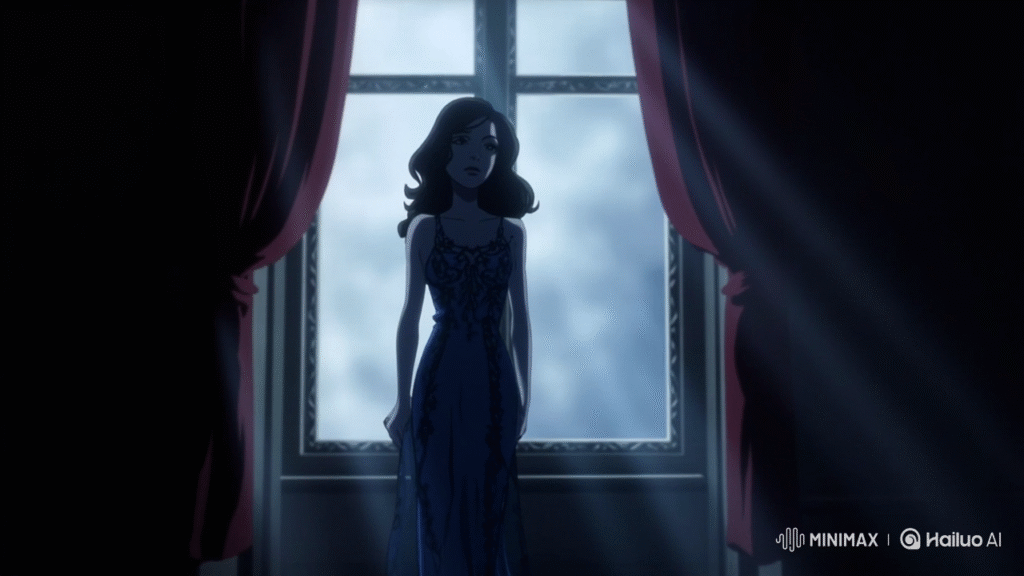
The Story
Eleanor Vance’s world had shrunk to the boundaries of her apartment after her husband died two years ago. Her mornings were a ritual: tea in her cracked blue mug, oatmeal, then the hour she spent sitting by her bay window overlooking Rowan Street.
From Window 6, she saw everything. The postman who never smiled. The boy who always skipped to school instead of walking. The stray cat that slept in a toppled flowerpot.
And then there was the woman in No. 14 Clara Rowan.
Clara was new. She moved in during November, carrying her life in only three suitcases. At first, Eleanor thought she was simply another seasonal renter. But Clara didn’t leave in December. Or January. Or February. She stayed, and Eleanor noticed things.
Strange things.
- Clara never answered the door when the delivery man knocked she’d wait until he left and then take the package inside.
- Sometimes, a man in a dark coat would come to her door at midnight, but he never stayed long.
- Once, Eleanor saw Clara sitting in the kitchen with her head in her hands for nearly twenty minutes, motionless.
The Night Everything Changed
It was March 18th, a Tuesday. Rain lashed against the glass, and the streetlamps flickered. At 10:47 PM, Eleanor, unable to sleep, sat at her window.
Through the rain-streaked glass, she saw Clara’s front door swing open. A man stepped inside quickly, as if trying not to be seen. He was tall, broad-shouldered, and his coat was dripping wet. Eleanor leaned forward, eyes narrowing.
Fifteen minutes later, the front door opened again but only Clara came out. Her hair was plastered to her face, and she clutched something metallic in her hand. She looked up, right at Eleanor’s window.
For the briefest second, their eyes met. Then Clara turned away, disappearing into the darkness.
The Aftermath
The next morning, Eleanor heard sirens. The man in the dark coat was found in Clara’s kitchen — dead. No signs of forced entry. No neighbors claimed to have seen anyone.
But Eleanor had seen something.
Detective Mark Halden came by, asking the standard questions. Eleanor considered telling him about Clara leaving with the metallic object. But something in her chest tightened an old instinct to protect, to stay quiet.
She thought of her late husband, who once told her, “Sometimes, the truth is heavier than silence.”
So Eleanor said nothing.
Days Later
Clara’s house was empty again. No police. No lights. No Clara.
Eleanor still sat at her bay window each morning, but the view felt different. Empty.
She wondered where Clara had gone and if her silence had saved her, or doomed her.
One rainy night weeks later, Eleanor found a small package at her doorstep. No note, just a small silver locket inside. She opened it and saw a photograph of a little boy and a woman Clara.
And tucked behind the photo was a slip of paper:
“Thank you for not speaking.”
Ending Note / Moral:
Silence can protect, but it can also haunt. Sometimes, you don’t speak because it’s safe and sometimes, because you know the truth can never be put back once it’s set free.
Silent Witness- Story 2: “The Train Car Witness”
Main Characters
- Adrian Cole 39, travel journalist, observant but reluctant to get involved in other people’s business.
- Margaret “Maggie” Luxton elderly widow, meticulous about her routine.
- Unknown Passenger a figure whose true identity is revealed only at the end.
Setting
An overnight train from Edinburgh to London, mid-winter, with only a few passengers in the dimly lit first-class car.
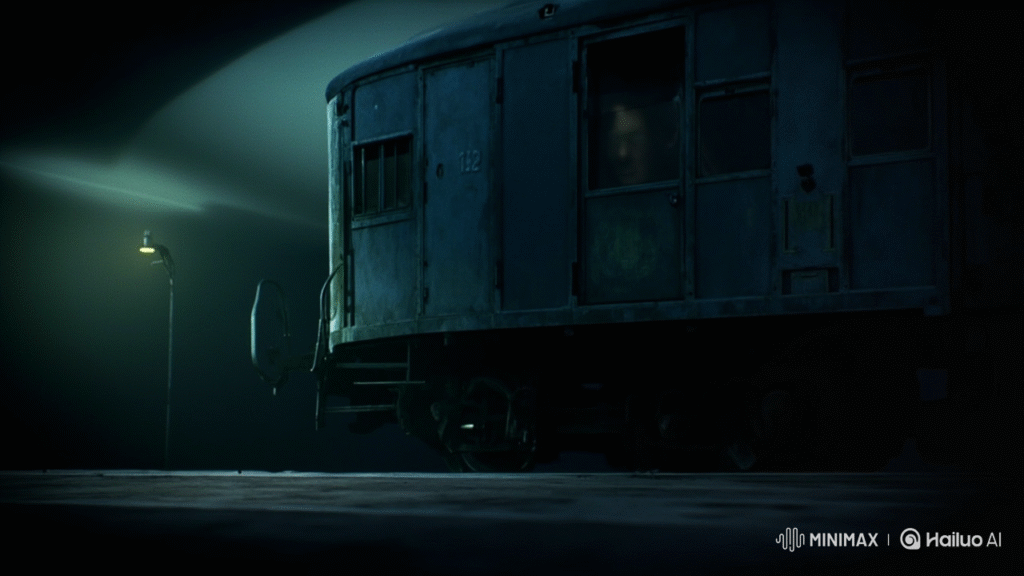
The Story
Adrian Cole had taken trains across Europe, but he loved British winter rides most. The quiet hum of the engine, the flickering lamplight, the gentle swaying of the carriage it all made him feel like life had slowed down.
That night, he boarded the 8:45 PM sleeper from Edinburgh to London. The car was nearly empty: an elderly woman in a navy coat sitting across from him, and a man in a dark cap at the far end, reading a newspaper.
For the first hour, nothing happened except the rhythmic rattle of wheels. Then, just past Newcastle, the train jolted suddenly, and the lights flickered. When they came back on, Adrian noticed something odd the man in the cap was gone. In his place was an unzipped leather satchel lying on the seat.
The Witness Moment
Maggie Luxton was knitting quietly when she looked up. Her lips parted slightly, but she said nothing. Her eyes darted to Adrian, then to the satchel, then back to her lap.
“Did you see where he went?” Adrian asked her.
Her knitting needles didn’t pause. “No.”
But her voice trembled and Adrian could tell she had seen something.
An Uneasy Arrival
When the train reached York, uniformed police officers boarded. They walked straight past Adrian and approached Maggie. Adrian caught fragments of their conversation:
“…incident in the dining car…”
“…needs questioning…”
“…only passenger with a direct view…”
Maggie’s lips pressed into a thin line. “I didn’t see anything,” she told them.
The officers seemed frustrated but eventually left. Maggie’s knitting never left her hands.
Hours Later
At 3:15 AM, the train stopped unexpectedly. Over the intercom, the conductor announced delays due to “police assistance ahead.” Adrian peeked through the glass door toward the platform more officers, talking into radios.
When he returned to his seat, the satchel was gone. So was Maggie.
The Truth That Never Left the Car
In London the next morning, Adrian overheard two station employees whispering:
“A chef from the dining car… dead before they found him.”
“No suspect, no witnesses. Security cameras were down during the blackout.”
Adrian realized Maggie had been the only one who could have seen something. He remembered the way her hands shook just slightly as she knit.
Weeks later, Adrian got a letter with no return address. Inside was a scrap of knitted navy wool and a single sentence:
“Some truths are too heavy for strangers.”
Ending Note / Moral:
Even when you witness something life-changing, you may choose silence not because you fear the law, but because you know your truth will change nothing but your own peace.
Silent Witness- Story 3: “The Last Photo on Baxter Street”
Main Characters
- Ruth Delaney 46, freelance photographer, struggling to find meaningful work.
- Caleb Moore 28, young activist, passionate but reckless.
- Detective Sonia Greer mid-50s, sharp and relentless.
Setting
Baxter Street, an aging block in the industrial district, where most buildings have been abandoned or turned into cheap apartments.
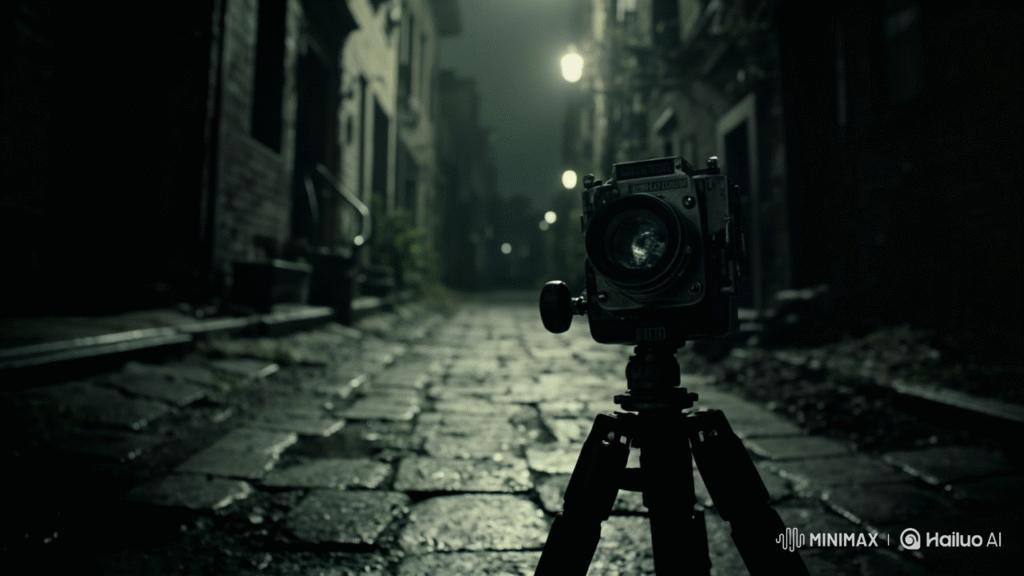
The Story
Ruth Delaney hadn’t planned to be on Baxter Street that night.
She was chasing a sunset shot for a magazine contest an amber glow spilling over the cracked brick of old warehouses.
But as she lined up the frame, something moved in her peripheral vision: a shadow slipping between two boarded-up doorways. She adjusted her camera.
Through her lens, she saw Caleb Moore. She didn’t know his name then, only that he had an intensity about him his eyes darting, his hands shoving something deep into his coat pocket. Behind him, two men followed.
Ruth instinctively clicked the shutter. The photo captured the moment perfectly: Caleb, mid-stride, unaware of her, and the two men just a few feet behind.
The Moment She Should Have Left
Ruth stayed in the shadows, her camera ready.
The men caught up to Caleb near the corner. She couldn’t hear what they said, but the body language was enough tense shoulders, quick glances, one man reaching inside his jacket.
Then, suddenly, a dull thud echoed down the street. Caleb collapsed. The men walked away quickly, not looking back.
Ruth’s hands shook as she lowered the camera. She had it all proof, faces, the sequence.
The Police Inquiry
Two days later, Ruth learned Caleb Moore’s name from the news: a local activist found dead in an alley, suspected drug overdose. No mention of an attack.
Detective Sonia Greer came to her studio a week later. She’d traced Ruth’s presence on Baxter Street from nearby CCTV.
“You saw something,” Greer said. “Maybe even photographed it.”
Ruth hesitated. The men in her photo she’d seen one again the day after the incident, leaning against her building, smoking, watching.
“I… didn’t get anything clear,” Ruth lied.
Greer’s eyes lingered on her longer than comfort allowed, but she eventually left.
The Decision
Ruth printed the photo once. She kept it hidden in a folder in the bottom drawer of her desk. She didn’t look at it often, but when she did, she noticed things she hadn’t before the fear in Caleb’s posture, the casual confidence of the men, the way the setting sun made everything look almost beautiful.
One rainy night months later, Ruth found an envelope under her studio door. Inside was a smaller print of her own photograph, cropped tightly to her own reflection in a shop window.
No note.
Just proof that someone else had been watching too.
Ending Note / Moral:
The camera sees, the witness remembers but sometimes silence is chosen not out of mercy or fear, but because the truth already has an audience, and it’s not always you.
Silent Witness – Story 4: “The Lighthouse Keeper’s Secret”
Main Characters
- Jonas Hale 58, solitary lighthouse keeper, stoic and reserved.
- Marina Carrow 33, marine biologist, warm but inquisitive.
- Unknown Sailor identity revealed in fragments.
Setting
A rugged, isolated lighthouse on the northern coast, where the sea is violent in winter and the wind carries voices if you listen long enough.
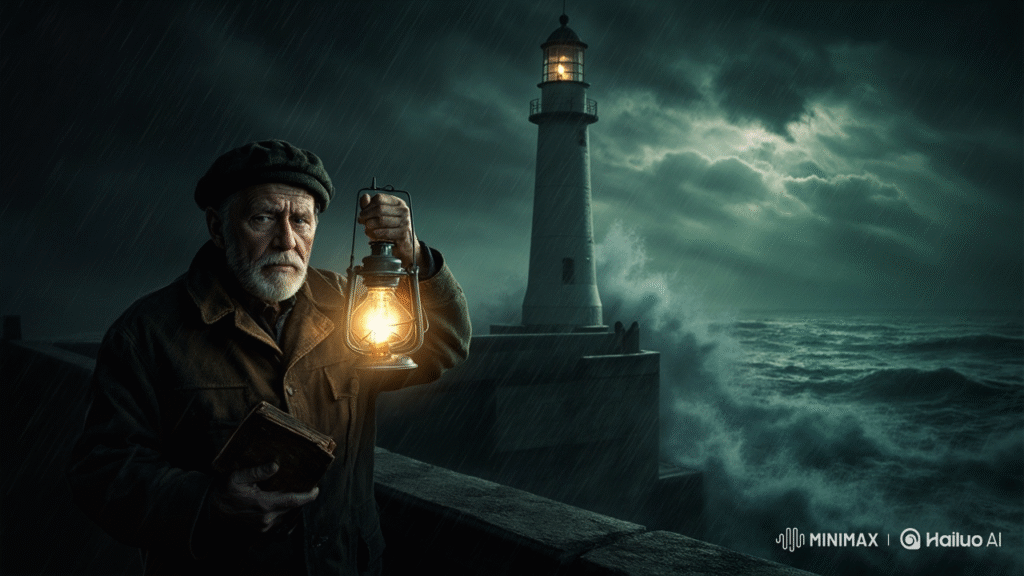
The Story
Jonas Hale had lived in the lighthouse for twelve years without a single overnight visitor. His days were clockwork: check the lamp, log the weather, send his reports, and tend to the silence that had long become his companion.
One late autumn night, as the tide slammed against the rocks, a faint knock came at the lighthouse door. When Jonas opened it, a man stood dripping in the cold, seaweed tangled in his jacket, eyes wild with something more than fear.
Jonas let him in without a word. The man didn’t give his name, only asked for dry clothes and a place to rest. His hands trembled, not from the cold, but from something unseen.
The Stranger’s Confession
Hours later, Jonas heard him mumbling in his sleep. Words about “cargo” and “they can’t find me” drifted between snores and gasps. Jonas sat in his chair, unmoving, the old revolver in his desk drawer whispering its presence to him.
By dawn, the man was gone. No footprints in the frost, no boat in sight. Only a dark stain on the floor where his clothes had dripped seawater.
The Arrival of Marina Carrow
A week later, Marina Carrow arrived by small motorboat. She was conducting winter marine surveys and had been granted temporary use of the lighthouse’s observation deck. Over coffee, she mentioned hearing of a missing fisherman from the nearby harbor.
Jonas said nothing. But his mind replayed the stranger’s shivering hands, the way he’d glanced toward the horizon before sleeping, as if someone out there was still watching.
The Search Party
One evening, a patrol boat’s light swept across the rocks. Two officers came to the door, asking if Jonas had seen any stranded sailors recently. His throat tightened, but his voice remained steady: “No one’s come this way in months.”
Marina’s eyes lingered on him after the officers left. She didn’t ask questions, but her silence felt sharper than suspicion.
The Final Letter
Months later, after Marina’s research ended, Jonas received a letter with no return address. Inside was a single page:
“You didn’t tell them. You kept me safe. I’ll repay you one day.”
Folded within was a small, rusted compass. Jonas placed it in the drawer with the revolver and closed it. The sea roared outside, as if swallowing the truth whole.
Ending Note / Moral:
Sometimes silence is not about loyalty or fear it’s about knowing that some tides can’t be turned back once they’re spoken into the open.
Silent Witness – Story 5: “The Hotel Room Above the Alley”
Main Characters
- Isabel Tran 41, traveling insurance auditor, methodical, detached, prefers anonymity.
- Devon Price mid-30s, local musician with a troubled past.
- The Man in the Red Tie identity only hinted at until the end.
Setting
A mid-tier hotel in the downtown district of a sprawling city, with rooms overlooking a narrow alley used by staff for deliveries and quick smoke breaks.
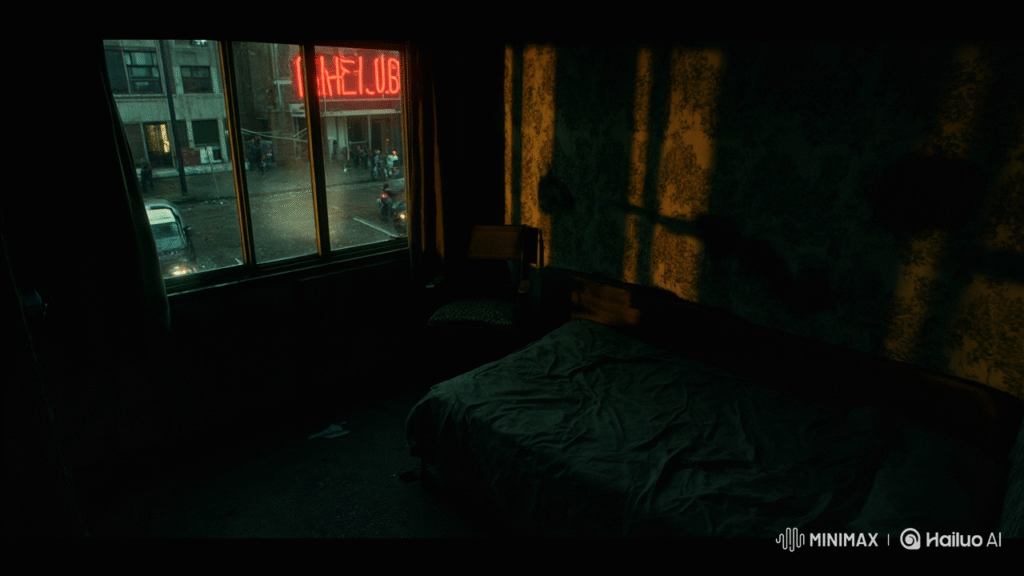
The Story
Isabel Tran had checked into the Bellhaven Hotel for three nights. She requested a room on the fifth floor, facing the alley not for the view, but for the quiet. The main street was loud, full of sirens and nightlife. The alley, in contrast, was a forgotten vein of the city.
On her second night, she sat at the desk by the window, working through a stack of claim reports, when movement below caught her attention.
A man in a red tie stood at the far end of the alley, talking to someone obscured in the shadows. His posture was casual, but his hand kept dipping into his jacket pocket. The shadows shifted a second man stepped forward, Devon Price.
The Sound That Didn’t Belong
The conversation lasted only seconds before a sharp sound too soft to be a gunshot, too quick to be a dropped box sliced through the air. Devon staggered, clutching his side. The man in the red tie caught him by the arm, whispered something, and let him collapse against the wall.
Isabel’s breath caught. She didn’t move. Didn’t even lift her phone.
The Morning After
At breakfast, the hotel lobby buzzed with gossip. “Local musician… OD’d in the alley,” someone said. “Tragic.”
Isabel knew it hadn’t been an overdose. The way Devon’s knees buckled, the controlled fall, the deliberate step back from the man in the red tie it had been too intentional.
That afternoon, police knocked on doors, asking guests if they’d seen anything unusual. Isabel answered calmly: “No, I kept my curtains drawn all night.”
The Envelope
When Isabel returned to her room that evening, an envelope was waiting on her desk. No hotel logo. No note. Just two items inside: a Polaroid of her at the window the night before, and a small hotel matchbook with a single word written inside the cover:
“Wise.”
Ending Note / Moral:
In cities, silence is often currency traded not for safety, but for the unspoken agreement that some truths stay hidden in exchange for your own shadow remaining unseen.
Silent Witness – Story 6: “The Library After Midnight”
Main Characters
- Clara Mendez 29, night shift library archivist, quiet and introverted, a perfectionist about order.
- Elliot Bryce 50, city councilman, respected but with rumors shadowing his career.
- Unnamed Teen appears briefly but shifts the entire story.
Setting
The Carnegie Public Library, an ornate century-old building with high ceilings, marble floors, and a rare books room locked after hours.
The Story
Clara Mendez liked the night shift. The silence was thick enough to feel like a blanket, the kind that muffled the world outside. Midnight in the library meant no chatter, no clicking keyboards just the occasional hum of the old heating system and the soft scrape of her pencil as she cataloged another archive box.
On a rainy Thursday, she was re-shelving reference ledgers when she heard the side door creak. The door was supposed to be locked.
She froze, half-hidden between the stacks.
The Arrival of Elliot Bryce
Councilman Elliot Bryce stepped inside, shaking off rain. He wasn’t alone a teenage boy followed, hoodie pulled low, eyes darting nervously. Clara recognized Bryce instantly from campaign posters, charity events in the local paper.
They walked to the back, toward the rare books room. Bryce unlocked it with a key Clara didn’t know anyone outside staff possessed.
The Things She Saw
From her hiding spot, Clara caught glimpses through the narrow glass window in the door. The boy handed Bryce a thick, weathered book wrapped in newspaper. Bryce slid an envelope thick enough to bulge across the table.
The boy didn’t linger. He left without looking back. Bryce stayed another five minutes, pacing the room, then exited the way he came.
Clara stepped into the rare books room once he was gone. On the table was a single piece of paper, torn from a notebook. It read:
“This is the last one. We’re even now.”
The Decision
The next day, the news reported a “donation” of rare manuscripts to a private collection, facilitated by Bryce. The library board called it “a generous preservation effort.”
Police never asked questions. No one mentioned the boy.
Clara kept her silence. But sometimes, when she passed the rare books room late at night, she swore she could still hear rain dripping from Bryce’s coat onto the marble floor.
Ending Note / Moral:
A library is built to preserve the truth of the past but sometimes the truths we witness in the present are the ones we quietly catalogue in our own minds, never to be displayed.
Silent Witness – Story 7: “The Bridge at Dusk”
Main Characters
- Henry Latham 67, retired dockworker, widower, spends evenings walking the same riverside route.
- Sophie Callen 25, art student, vibrant but struggling.
- Unknown Driver never fully revealed.
Setting
An old suspension bridge spanning a wide, slow-moving river. In the evenings, the bridge is quiet except for the hum of streetlamps and the sound of water below.
The Story
Henry Latham liked the bridge at dusk. It was where the day exhaled, where the city’s noise softened into the lap of the river. He’d walk to the center, lean against the railing, and watch the water catch the last scraps of light.
One Tuesday evening in early spring, he saw Sophie Callen there leaning far over the railing, sketchbook in one hand, the other gripping the metal tightly.
He’d seen her before, sitting on the bridge’s stone benches, drawing for hours. Tonight, though, she looked different. Her shoulders were tense, her eyes fixed not on the water’s reflection but on the current itself.
The Car That Stopped
Headlights approached slowly from the far end. A black sedan stopped in the middle of the bridge. The driver’s window slid down. Sophie turned her head slightly, and though Henry was too far to hear, he saw her tense even more.
The driver leaned over, said something, and held out an envelope. Sophie stepped closer.
The envelope slipped from her fingers, scattering papers that the wind caught instantly. Sophie turned back toward the railing and in that moment, Henry understood the heaviness in her stance.
The Moment He Chose Silence
Henry could have crossed the distance. He could have called out. But something in her expression told him she was already past the point of being pulled back by strangers.
He stayed where he was, a shadow in the fading light. The sedan pulled away slowly. Sophie remained at the railing for another full minute before turning and walking toward the city.
Aftermath
Two days later, the local paper ran a short obituary: Sophie Callen, 25, passed away unexpectedly. No details.
Henry didn’t attend the memorial. But he began walking the bridge earlier each evening, before dusk settled.
He told himself it was just for the light but deep down, he knew it was to make sure no one else stood at the railing the way she had.
Ending Note / Moral:
Sometimes being a witness isn’t about speaking up after it’s about knowing you could have stepped forward and didn’t, and living with the echo of that choice.
Silent Witness Story 8: “The Apartment Above the Pawnshop”
Main Characters
- Leah Moran 34, freelance translator, recently moved into the city after a breakup.
- Ralph Kinney 59, pawnshop owner, gruff but strangely protective of his street.
- Unknown Visitor appears only once but sets the chain of events in motion.
Setting
A narrow, neon-lit street where the pawnshop sits between a 24-hour diner and a boarded-up theater. Leah’s small apartment directly overlooks the shop’s back entrance.
The Story
Leah Moran moved into the apartment because it was cheap and close to the train. She didn’t mind the constant hum of neon from the pawnshop sign it was almost comforting at night.
But in her second week, she noticed a pattern. Every Thursday at exactly 11:20 PM, Ralph Kinney would unlock the shop’s back door and let in a visitor. Always the same tall man in a long coat. Always the same quick transaction.
On the third Thursday, Leah was working late at her desk when she heard raised voices through her open window. She leaned out just enough to see Ralph holding a velvet case, the tall man gesturing sharply, his other hand deep in his coat pocket.
The Breaking Point
This Thursday, though, was different. The voices grew heated, echoing between the brick walls. Ralph shoved the velvet case back at the man. The man’s posture stiffened a small glint of metal flashed in the dim light.
Leah’s heart pounded. She froze in place.
And then, just as suddenly, the man lowered whatever was in his hand, turned, and walked into the darkness. Ralph stood alone, breathing hard, before slamming the back door shut.
The Day After
The next morning, police cars lined the street. Word spread quickly: the body of a man, tall, found in an alley three blocks away. No ID, but the description matched Leah’s Thursday visitor.
An officer came up to her apartment, asked if she’d heard anything unusual. She kept her voice level. “Just the usual city noise.”
The Unspoken Exchange
That night, Leah came home to find a small box outside her door. Inside was the same velvet case she’d seen Ralph holding now empty. Beneath it, a note in block handwriting:
“You didn’t see me. I didn’t see you.”
Ending Note / Moral:
In some places, survival isn’t about telling the truth it’s about agreeing to erase each other’s truths entirely.
9.The Sea Captain’s Promise
In the small, wind-battered fishing village of Grayharbor, there lived an old sea captain named Elias Crowe. His skin was weathered like driftwood, and his eyes were as deep and restless as the ocean itself. Elias was famous for two things: surviving a shipwreck in his youth and telling stories so vivid they felt like memories you didn’t know you had.
One evening, as a thick fog rolled in from the sea, Elias sat by the fire at The Salted Anchor tavern. Children huddled at his feet, and adults leaned in close, their mugs of ale forgotten. Elias began telling the story of The Promise.
Years ago, before his beard turned white, Elias had been the captain of The Meridian, a ship bound for trade across distant seas. One stormy night, the ship was caught in a violent squall. The waves towered like mountains, lightning split the sky, and the crew fought desperately to keep the vessel afloat.
In the chaos, Elias spotted a faint light far off in the darkness a lighthouse he didn’t recognize. Steering toward it, he guided the battered ship into calm waters. But when the storm cleared, there was no lighthouse to be seen, only a lone island with a single willow tree swaying in the wind.
There, a woman in a flowing blue gown approached him. Her hair shimmered like moonlit waves, and her voice was soft as the tide. She told him she was the Guardian of the Sea, and she had saved his life. But in return, Elias must make a promise: “Whenever the sea calls, you will answer.”
Elias agreed, thinking it was nothing more than a poetic moment. But over the years, strange events began to happen. A dream would come to him always of that same willow tree and the next day, he’d find someone in need of rescue at sea. Fishermen trapped in a sudden storm, sailors whose ships had lost their way Elias found them all, guided by an unseen hand.
Now, decades later, Elias told the villagers that he still felt the pull of the promise. And though he was old, he knew that the sea had not yet called for him the final time.
Outside, the wind howled, and in the distance, faintly, the sound of a wave breaking seemed to whisper through the fog: “Elias…”
The children stared wide-eyed, unsure if it was just the wind or something more. Elias only smiled, eyes glinting like starlight on dark water.
Moral: A true promise lasts a lifetime, and the call of duty never fades, no matter the years.
10.The Lighthouse Keeper’s Last Storm
Far out on the rugged coast of Graywater Bay stood an old lighthouse, its bricks weathered by decades of salt, wind, and rain. It was said that the lighthouse was built not only to guide ships but to protect the bay from a curse that had swallowed many vessels before its construction.
Elias Whitmore, the lighthouse keeper, was a man in his late sixties with hands as calloused as the stones of the tower itself. He had tended the light every night for forty years, never missing a single evening whether in calm summer breezes or during winter gales so fierce they rattled the glass in the lantern room.
One autumn night, a storm unlike any Elias had ever seen gathered on the horizon. The waves grew monstrous, swallowing the moonlight. The wind howled through the cracks in the door like a chorus of the drowned. Lightning illuminated the sea, revealing jagged rocks that looked like the teeth of some sleeping beast.
But there was something else out there a flicker. A ship.
Its sails were torn, its mast leaning dangerously, and it was being pulled toward the cursed shoals.
Elias cranked the great light to its highest intensity, but the storm’s fury seemed to fight him at every turn. The lamp flickered, threatening to go out. He climbed the spiral staircase again and again to keep the mechanism alive, oiling gears, cleaning glass, and tightening bolts, even as the wind tried to shove him back down.
Then, in a flash of lightning, he saw her.
Not the ship.
Her.
A woman in a flowing white gown, standing on the rocks below, her face pale and eyes shining like the sea itself. She raised her hand toward him as if beckoning. Elias knew the stories the ghost of the Graywater Bride, a woman who had drowned in those very waters a century ago. Legends said she appeared to those about to die.
But Elias didn’t stop. He turned back to the lamp, forcing the light to cut through the storm. Slowly, painfully, the ship shifted course, turning away from the rocks. The captain must have seen the beam through the wall of rain.
When dawn broke, the storm had passed. The ship was gone, safe beyond the headland. But so was Elias. They found him at the top of the lighthouse, slumped beside the lamp, his eyes closed in peaceful stillness, his hand resting on the crank.
Some say he died of exhaustion. Others say the Graywater Bride finally claimed him as payment for defying her. And if you visit the lighthouse today on a stormy night, sailors swear they still see the beam sweep across the water… and a figure standing in the lantern room, keeping watch.
Conclusion:
Every Silent Witness story whispers one truth: silence can hide darkness, but it can also awaken redemption.
At Inspirednap.com, we continue exploring such human emotions through stories like Greed Stories and Kindness Stories, where each tale touches the unseen corners of the soul.
If you wish to learn more about turning silence into advocacy, visit SilentWitness. an external initiative dedicated to empowering victims to speak safely and reclaim their voices.
So next time you hear nothing, remember silence isn’t empty. Sometimes, it’s the sound of truth waiting to be heard.

